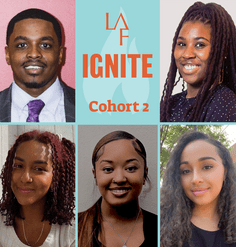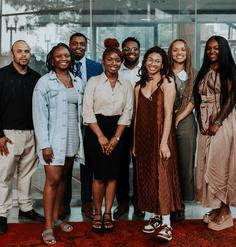Olmsted Scholar Feature: 1936 Olympic Village - At the Intersection of Preservation and Renewal
By Katia Rios, 2014 University Olmsted Scholar
Just west of Berlin, Germany, adjacent to a village in former East Germany, lies an often overlooked yet significant landmark. Essentially an abandoned landscape, the remnants of the 1936 Olympic Village evoke a powerful past that dates back to one of the darkest periods in Germany’s history. The Nazi government conceived and built this roughly 130-acre complex to house the 1936 Olympic athletes, including the legendary Jesse Owens. It was transformed into a military base during the Second World War, and taken over by the Soviet Union as a sports training camp for its military. Finally, after the reunification of Germany, the landscape was abandoned with uncertainty as to its future. Only recently has it been rehabilitated to serve as an outdoor museum and witness to Germany’s past.
The 1936 Olympic Village is not only an emblem of Germany’s history but also a unique example for understanding various topics in landscape architecture. As an abandoned landscape, the Olympic Village is a great opportunity to understand time’s influence on infrastructure and landscapes, in the context of environmental processes, deterioration and decay, and ecological resilience. The site provides the opportunity to explore the issues of cultural and historic landscape preservation, and the unique balancing of preservation and revitalization or renewal. As a public space, issues of community involvement are brought to the foreground and bring to light opportunities for public engagement. The 1936 Olympic Village lies at the intersection of these issues and allows a unique example for understanding landscape architecture’s role in addressing these site conditions and the issues inherently embedded within this site.
My Master’s Report dealt with this complex site under these premises, bridging the gap between the depth of the past with the possibilities for the future. The design outcome allows history to come to the foreground while simultaneously planning and envisioning a revitalized purpose for the Village. Its intent is to provide visitors with a comprehensive history of the site, allowing them to reflect, process, and understand that history, and ultimately enjoy recreational opportunities within a large, ecologically-rich landscape. The design fosters a sense of exploration, allowing visitors to create their own experience within this unique place that has an incredible potential to become so much more than it is now.
Beyond the 1936 Olympic Village itself, the focus on a former Olympic Village site comes at an opportune time, in the midst of discussions around the future of the infrastructure and impacts of the most recent Olympic Games in Sochi, Russia. The 1936 Olympic Village is a reflection of the challenges of integrating Olympic Villages and Olympic infrastructure back into the folds of community after the Games have left. There is great potential for an examination such as this to answer similar questions for other abandoned Olympic Villages around the world. The uncertain futures of Olympic Villages highlight the issues surrounding redevelopment and reuse of infrastructure involved in such temporal and short-lived events. The discrepancy between the investment of host cities into the creation of Olympic sites, with the short-lived nature and fleeting use of these sites warrants more attention. Landscape architecture, in this context, provides an effective strategy for working through these discrepancies and contradictions.
Link to Master’s Report: http://blur.by/1uDde4Z
Katia Rios (Gedrath-Smith) completed her Master of Landscape Architecture from the University of Arizona in May. She now works as an intern at Gustafson Guthrie Nichol in Seattle, Washington, launching her career in landscape architecture.















